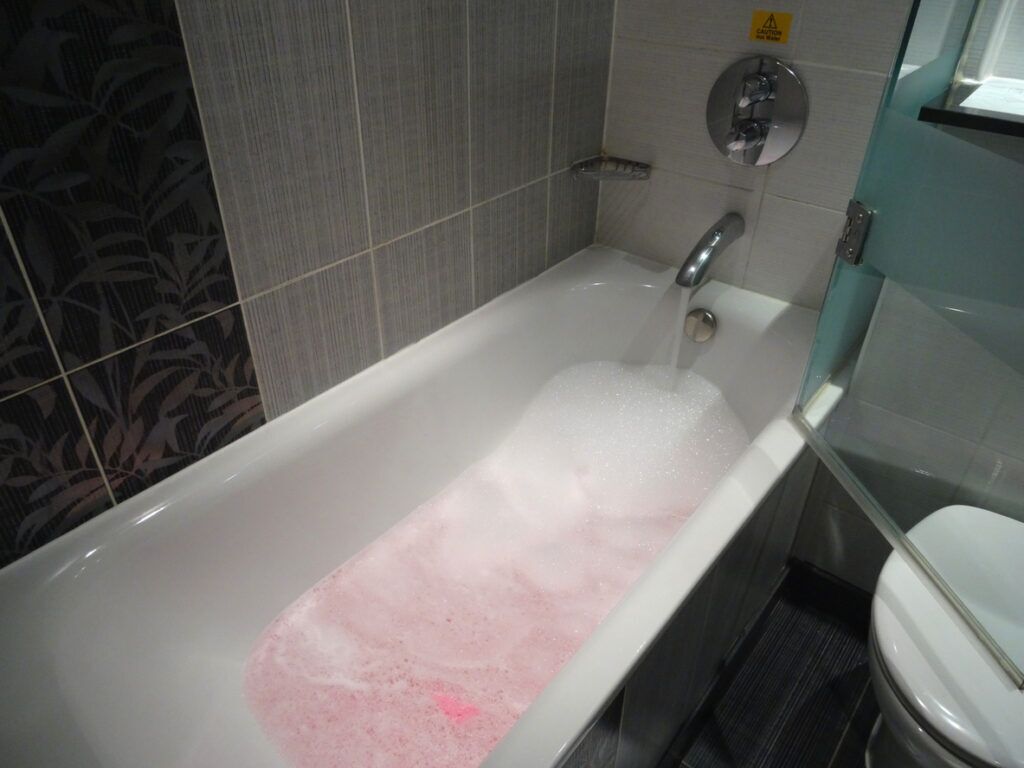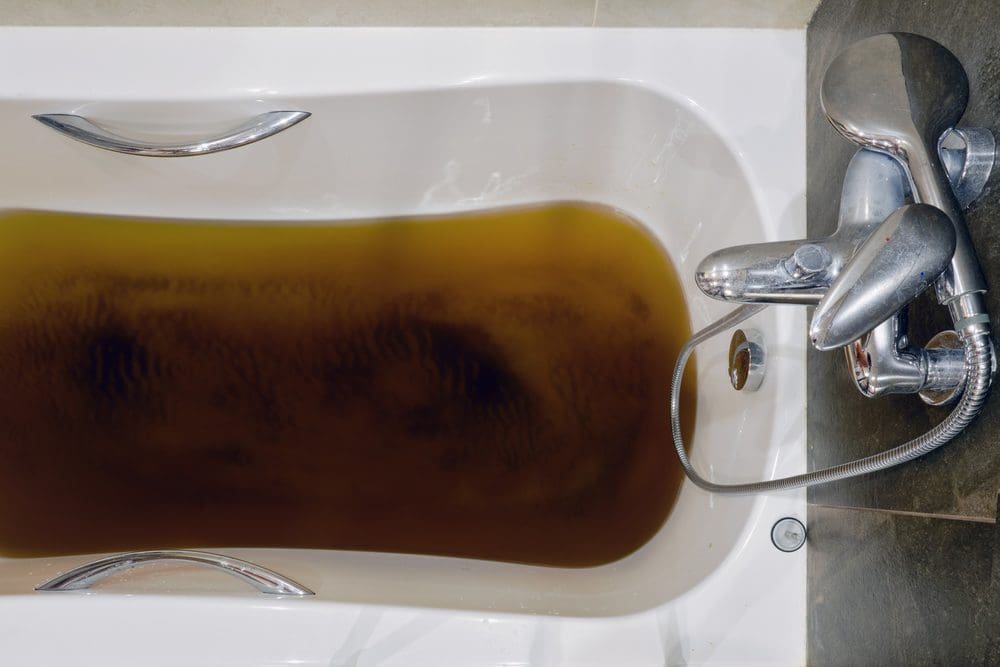Top Reasons Behind Sewage Backflow in the Bathtub
Top Reasons Behind Sewage Backflow in the Bathtub
Blog Article
We've noticed this post on What to Do if Sewage Starts Coming Up Through Your Bathtub listed below on the net and think it made sense to write about it with you in this article.

Sewage backup in the bath tub can be an upsetting and unhygienic issue for any property owner. Not only is it bothersome, but it likewise poses serious wellness risks and shows underlying concerns with the plumbing system. Understanding why sewage is showing up via the bath tub is vital for taking appropriate action to attend to the trouble efficiently.
Introduction to the Issue
Recognizing the Problem
When sewer starts backing up right into the tub, it's a clear indicator of a problem with the drainage system. The wastewater that needs to be moving far from your home is instead locating its back into your home, which can lead to substantial damage and carcinogen.
Possible Causes
Several aspects can contribute to sewer backup in the bath tub. From blockages in the drain line to problems with the plumbing infrastructure, identifying the source is necessary for finding a service.
Common Factors for Sewage Back-up
Blockages in the Drain Line
Among the most usual reasons for sewage backup is a blockage in the drain line. This can happen as a result of the build-up of debris, grease, or international objects in the pipelines, avoiding proper circulation and causing sewage to support into your bathtub.
Tree Root Breach
Tree origins seeking dampness and nutrients can penetrate drain lines via tiny cracks or joints. Gradually, these roots can grow and expand, creating significant damage to the pipelines and resulting in sewage backup issues.
Aging Facilities
Older homes might have dated plumbing systems that are a lot more at risk to rust, fractures, and deterioration. As pipelines age, they end up being a lot more susceptible to leakages and obstructions, increasing the chance of sewage back-up occurrences.
Heavy Rainfall or Flooding
Throughout durations of heavy rainfall or flooding, the sewer system might come to be overwhelmed with excess water, causing back-ups and overflows. This can cause sewage backing up right into tubs and other fixtures inside the home.
Wellness Threats Associated with Sewage Backup
Contamination of Water
Sewage backup can contaminate the water supply in your house, posing a major wellness danger to you and your household. Exposure to polluted water can lead to stomach problems, skin infections, and various other diseases.
Spread of Illness
Sewer includes damaging bacteria, infections, and bloodsuckers that can cause a series of illness, including hepatitis, cholera, and gastroenteritis. Coming into contact with sewage or contaminated surface areas puts you in jeopardy of infection.
Mold Growth
Moisture from sewer back-up can create ideal conditions for mold growth in your home. Mold spores can aggravate respiratory problems and cause allergic reactions in delicate individuals, making punctual clean-up essential.
Indicators of Sewage Backup
Foul Odors
Unpleasant smells rising from drains or fixtures, particularly in the washroom, might show sewage backup concerns. These odors are typically solid and consistent, indicating an issue that calls for prompt focus.
Slow Draining Fixtures
Bath tubs, sinks, and bathrooms that drain slowly or not whatsoever could be experiencing sewage backup. If numerous components are affected all at once, it's most likely that the concern originates from a common point, such as the main drain line.
Gurgling Noises
Odd gurgling or gurgling noises coming from drains pipes when water is running in other places in your home are a measure of air caught in the plumbing system. This air build-up can arise from sewer backup and need to be checked out promptly.
Immediate Actions to Take
Switching Off Supply Of Water
In the event of sewer backup, it's important to shut off the water system to prevent further contamination and damages. Locate the primary water shutoff valve in your house and shut it off up until the problem can be resolved.
Getting In Touch With an Expert Plumber
Handling sewage back-up is not a do it yourself work. Contact a licensed plumber with experience in taking care of sewage-related problems to analyze the circumstance and do necessary repairs or cleanups.
Staying Clear Of Contact with Infected Water
Until the sewage back-up is solved, prevent contact with polluted water to prevent the spread of bacteria and microorganisms. Use safety gear if you must be in the damaged area and wash your hands extensively later.
Safety nets
Routine Maintenance of Sewer Lines
Set up normal examinations and maintenance of your sewage system lines to recognize and deal with possible issues before they escalate right into major issues. This can consist of cleaning debris, evaluating for tree root intrusion, and repairing any type of broken pipelines.
Setting Up Bayou Shutoffs
Consider installing bayou valves in your plumbing system to prevent sewer from receding into your home throughout durations of heavy rainfall or flooding. These valves immediately close when water starts backing up, safeguarding your residential or commercial property from contamination.
Proper Disposal of Household Waste
Prevent purging anything aside from bathroom tissue and human waste down the bathroom to avoid blockages and obstructions in the sewer line. Dispose of oil, oil, and various other family chemicals properly to lessen the threat of plumbing issues.
Tidying up After Sewage Back-up
Sanitation Procedures
Extensively sanitize and disinfect influenced locations after sewage backup to remove dangerous germs and prevent mold development. Use suitable cleaning items and protective gear to ensure risk-free and reliable cleaning.
Repair of Influenced Areas
Repair any damages to flooring, wall surfaces, or fixtures triggered by sewage backup. Relying on the degree of the damage, you may require to replace carpeting, drywall, or various other products to restore your home to its pre-loss condition.
Why is Sewage Coming Up Through Your Bathtub?
Reasons You May Have Sewage in Your Bathtub
All the drains in your home lead down different pipes to get to the main sewer line. If you’re seeing sewage in the bathtub, the problem is that the main sewer line is clogged up, which is causing the water running through other drains to be pushed back into other pipes. The problem isn’t the bathtub, but the main line. The sewer line can get backed up by anything that goes down the drain, from food waste, hair and soap particles to jewelry or children’s toys. Tree branches or dirt can also impact the sewer line. If you’re seeing sewage in the bathtub, you have a big problem that usually needs a professional plumber. Trying to fix this problem without the right tools or knowledge can lead to bigger plumbing problems.
Fixing a Clogged Sewage Line
Although you shouldn’t try to fix the clogged sewer line on your own, you may be able to mitigate the issue until you can get a plumber to your home. A plunger isn’t going to help, because it won’t be able to reach the sewage drain to unblock the problem.
Turn Off Water
Find the main shutoff valve to your home to turn off the water. This prevents more water from going down the drain which is only going to flow back into your bathtub.
Snake the Toilet and Drain
Start by using a drain pipe snake to clean out the toilet drain. Rotate the snake clockwise when you push the snake down. As you pull it out, the snake should spin counterclockwise. Follow up by snaking out the bathtub drain. If you are successful, both the toilet and shower will drain efficiently. If you’re not successful, you probably have a bigger problem than your tools and experience can manage.
Contact a Professional Plumber
Pros have the tools to find the source of the problem and the experience to manage big blockages without causing more damage to your pipes. It can save you a lot of stress by contacting the professionals sooner rather than later.
Identify the Early Signs of a Clogged Sewage Line
If you’re gearing up for a holiday family gathering or just want to avoid the hassle of a clogged sewage line in your home, make sure you recognize the signs of a clogged sewer line.
Slow drains are a sign of a sewer line problem. Gurgling drains from any drain in your home indicate that you may have an obstruction in the drains. If your toilet keeps getting clogged, it might be a problem with the sewer line. When you see laundry water or water from the dishwasher in different sinks in the home, it’s an indication that your sewer drain is beginning to get backed up. These symptoms can often be “fixed” temporarily to get through a day or week before you start seeing the same problem. When it comes to plumbing problems, you want to fix the root of the problem instead of muddling through. The clog will not go away on its own.
https://handymanconnection.com/mississauga/articles/why-is-sewage-coming-up-through-your-bathtub/

I stumbled upon that content about Why sewage is coming up through your bathtub while doing a lookup on the internet. Enjoyed reading our entry? Please quickly share it. Let other people find it. Thank you so much for going through it.
Call Today
Report this page